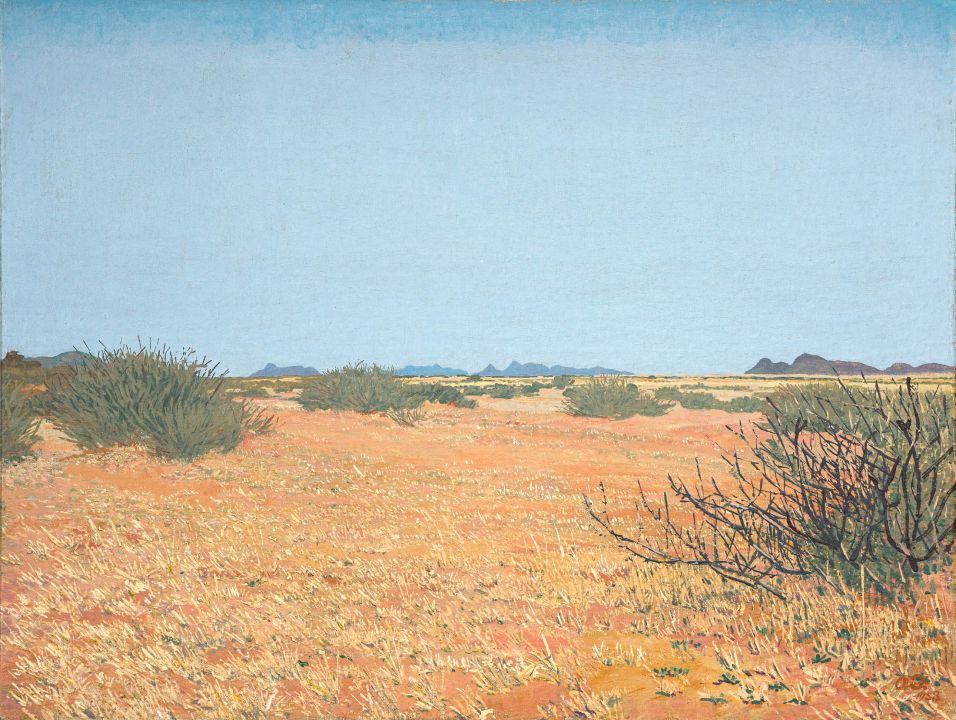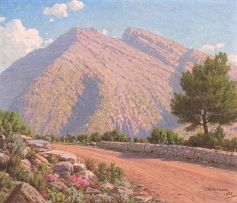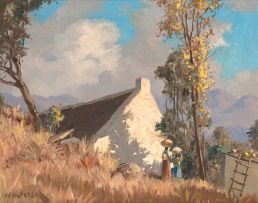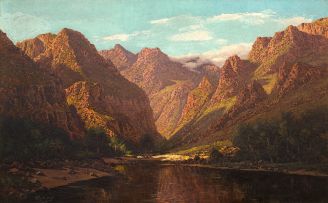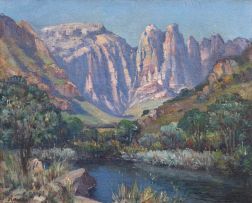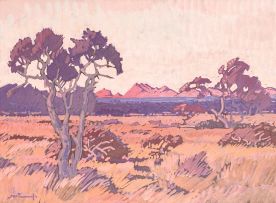Important South African and International Art, Decorative Arts & Jewellery
Live Auction, 5 March 2018
Art: Evening Sale
Incl. Buyer's Premium & VAT
About this Item
signed with the artist's initials and dated 1938
Notes
The acclaimed desert landscape painter Adolph Jentsch settled in Namibia when he was 49. Born in Germany and trained at the State Academy for Visual Arts in Dresden, he worked as an interior designer before emigrating to Namibia, then a South African protectorate, in February 1938. His first address was a cousin's farm, Kleepforte, roughly 100km east of Windhoek in the high-plateau region of Khomas. The present work depicts a landscape at Seeis, a small settlement en route to Windhoek from Kleepforte. It offers a valuable record of this northern immigrant's earliest response to his adopted homeland. According to Jentsch's biographer, Olga Levinson, he revelled in the "vast open spaces and endless horizons" of Namibia.1
Jentsch spent his first few months actively recording the country's landscapes. He presented his first solo exhibition the same year he arrived. Held in Windhoek's storied Grossherzog Hotel, this exhibition received favourable reviews. Jentsch's earliest paintings of Namibia were all produced in oil, which Levinson typifies as "large canvases with a cosmic conception".2
In the early 1940s he moved to aquarelle, a medium better suited to Jentsch's evolving pursuit of mystical description in his landscape work. This painting predates his more austere watercolours, which referenced Chinese techniques and placed a premium on spiritual empathy. Jentsch's brand of impressionism in this painting is marked by his "extremely delicate style".3 Compositionally, Landscape, Seeis, Namibia is typical of Jentsch's horizon-line renderings of an observable reality. The techniques that Jentsch would later refine in his watercolours are also suggested here. Writing in a 1976 magazine article about Jentsch, art historian Esmé Berman observed, "the most impressive of his oil canvases are those in which the medium is drastically thinned, its viscous properties negated and colour is applied in brisk and liquid brushstrokes".4 Many of these attributes are observable in this fine work.
- Olga Levinson. (1973) Adolph Jentsch, Cape Town: Human & Rousseau. Page 35.
- Olga Levinson. (1970) 'Adolph Jentsch', SWA Annual, Windhoek: South West Africa Publications. Page 91.
- Hans Fransen. (1982) Three Centuries of South African Art, Johannesburg: AD. Donker. Page 272.
- Esmé Berman. (1976) 'Adolph Jentsch', Art International, Vol. 20. Page 20.
